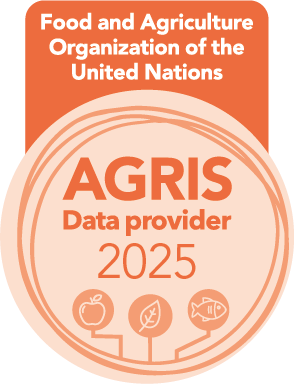Assessment of Knowledge and Perceptions of Pakistani Adults about Non-nutritive Sweeteners
Knowledge and Perceptions of Pakistani Adults about Non-nutritive Sweeteners
DOI:
https://doi.org/10.54393/df.v5i01.104Keywords:
Non-nutritive Sweeteners, Pakistani Adults, Weight Management, DiabetesAbstract
Non-nutritive sweeteners are used as a substitute for sugar and have strong sweetening properties. They can be helpful in weight management, diabetes, and other insulin sensitivity-related metabolic disorders. Objective: This survey intended to analyze the knowledge and risk perceptions related to the safety and benefits of Non-nutritive sweeteners in a population of Pakistani adults. The impact of knowledge dissemination on the consumption of Non-nutritive sweeteners was also assessed. Methods: An online survey was conducted, and 680 responses were received. Results: Results indicated that 55.7% reported Non-nutritive sweeteners consumption, while 44.3% denied any usage. Only 27.4% of respondents showed trust in regulatory bodies while only 26.2% had any idea about the laws surrounding their use. The second part of the study aimed to examine the effect of knowledge dissemination on Non-nutritive sweeteners consumption, but the result showed that the participants were still not convinced about the safety levels of Non-nutritive sweeteners (p < 0.05). The only statement that participants were persuaded by was that Non-nutritive sweeteners does not pose any risk of cancer. The main reason for consumption was attributed to the low caloric properties of Non-nutritive sweeteners. Conclusions: The results showed that effective communication by regulatory authorities and health professionals via the internet, social media and leaflets can be beneficial in educating the public about Non-nutritive sweeteners. The role of health care professionals is also important to assure the public of the safety of Non-nutritive sweeteners.
References
Yang Q. Gain weight by “going diet?” Artificial sweeteners and the neurobiology of sugar cravings: Neuroscience 2010. The Yale Journal of Biology and Medicine. 2010 Jun; 83(2): 101.
Caballero B, Finglas P, Toldrá F. Encyclopedia of food and health. Academic Press; 2015.
Cleveland Clinic. Substitutes for Sugar: What To Try and What To Limit. [Last Cited: 19th Feb 2024]. Available at: https://health.clevelandclinic.org/best-and-worst-sugar-substitutes.
Home and Graden Information Center. Non-Nutritive Sweeteners. [Last Cited: 19th Feb 2024]. Available at: https://hgic.clemson.edu/factsheet/non-nutritive-sweeteners/.
Swithers SE. Artificial sweeteners produce the counterintuitive effect of inducing metabolic derangements. Trends in Endocrinology & Metabolism. 2013 Sep; 24(9): 431-41. doi: 10.1016/j.tem.2013.05.005. DOI: https://doi.org/10.1016/j.tem.2013.05.005
Pepino MY. Metabolic effects of non-nutritive sweeteners. Physiology & Behavior. 2015 Dec; 152: 450-5. doi: 10.1016/j.physbeh.2015.06.024. DOI: https://doi.org/10.1016/j.physbeh.2015.06.024
Gardner C, Wylie-Rosett J, Gidding SS, Steffen LM, Johnson RK, Reader D et al. Nonnutritive sweeteners: current use and health perspectives: a scientific statement from the American Heart Association and the American Diabetes Association. Circulation. 2012 Jul; 126(4): 509-19. doi: 10.1161/CIR.0b013e31825c42ee. DOI: https://doi.org/10.1161/CIR.0b013e31825c42ee
Rogers PJ, Hogenkamp PS, de Graaf C, Higgs S, Lluch A, Ness AR et al. Does low-energy sweetener consumption affect energy intake and body weight? A systematic review, including meta-analyses, of the evidence from human and animal studies. International Journal of Obesity. 2016 Mar; 40(3): 381-94. doi: 10.1038/ijo.2015.177. DOI: https://doi.org/10.1038/ijo.2015.177
Serra-Majem L, Raposo A, Aranceta-Bartrina J, Varela-Moreiras G, Logue C, Laviada H et al. Ibero–American consensus on low-and no-calorie sweeteners: Safety, nutritional aspects and benefits in food and beverages. Nutrients. 2018 Jun; 10(7): 818. doi: 10.3390/nu10070818. DOI: https://doi.org/10.3390/nu10070818
Pastors JG, Warshaw H, Daly A, Franz M, Kulkarni K. The evidence for the effectiveness of medical nutrition therapy in diabetes management. Diabetes Care. 2002 Mar; 25(3): 608. doi: 10.2337/diacare.25.3.608. DOI: https://doi.org/10.2337/diacare.25.3.608
Diabetes.co.uk. Nutritive and Non-nutritive Sweeteners. [Last Cited: 19th Feb 2024]. Available at: https://www.diabetes.co.uk/sweeteners/nutritive-and-nonnutritive-sweeteners.html.
Shwide-Slavin C, Swift C, Ross T. Nonnutritive sweeteners: where are we today? Diabetes Spectrum. 2012 May; 25(2): 104-10. doi: 10.2337/diaspect.25.2.104. DOI: https://doi.org/10.2337/diaspect.25.2.104
Heart Attack and Stroke Symptoms. Non-Nutritive Sweeteners (Artificial Sweeteners). [Last Cited: 19th Feb 2024]. Available at: https://www.heart.org/en/healthy-living/healthy-eating/eat-smart/sugar/nonnutritive-sweeteners-artificial-sweeteners.
U.S Food and Drug Administration. Food Ingredient & Packaging Terms. [Last Cited: 19th Feb 2024]. Available at: https://www.fda.gov/food/food-ingredients-packaging/food-ingredient-packaging-terms.
Farhat G, Dewison F, Stevenson L. Knowledge and perceptions of non-nutritive sweeteners within the UK adult population. Nutrients. 2021 Jan; 13(2): 444. doi: 10.3390/nu13020444. DOI: https://doi.org/10.3390/nu13020444
Azad MB, Abou-Setta AM, Chauhan BF, Rabbani R, Lys J, Copstein L et al. Nonnutritive sweeteners and cardiometabolic health: a systematic review and meta-analysis of randomized controlled trials and prospective cohort studies. Canadian Medical Association Journal 2017 Jul; 189(28): E929-39. doi: 10.1503/cmaj.161390. DOI: https://doi.org/10.1503/cmaj.161390
Daher MI, Matta JM, Nour AM. Non-nutritive sweeteners and type 2 diabetes: Should we ring the bell?. Diabetes Research and Clinical Practice. 2019 Sep; 155: 107786. doi: 10.1016/j.diabres.2019.107786. DOI: https://doi.org/10.1016/j.diabres.2019.107786
European food safety authority. Sweeteners. [Last Cited: 19th Feb 2024]. Available at: https://www.efsa.europa.eu/en/topics/topic/sweeteners.
Wilson T, Murray B, Price T, Atherton D, Hooks T. Non-nutritive (artificial) sweetener knowledge among university students. Nutrients. 2019 Sep; 11(9): 2201. doi: 10.3390/nu11092201. DOI: https://doi.org/10.3390/nu11092201
Goyal R, Deshmukh N. Food label reading: Read before you eat. Journal of Education and Health Promotion. 2018; 7. doi: 10.4103/jehp.jehp_35_17. DOI: https://doi.org/10.4103/jehp.jehp_35_17
Escoffery C, Miner KR, Adame DD, Butler S, McCormick L, Mendell E. Internet use for health information among college students. Journal of American College Health. 2005 Jan; 53(4): 183-8. doi: 10.3200/JACH.53.4.183-188. DOI: https://doi.org/10.3200/JACH.53.4.183-188
Suresh A. Is Honey Better For Your Blood Glucose Levels Than Sugar?. Reading Time. 2017 Dec.
Laviada‐Molina H, Molina‐Segui F, Pérez‐Gaxiola G, Cuello‐García C, Arjona‐Villicaña R, Espinosa‐Marrón A et al. Effects of nonnutritive sweeteners on body weight and BMI in diverse clinical contexts: Systematic review and meta‐analysis. Obesity Reviews. 2020 Jul; 21(7): e13020. doi: 10.1111/obr.13020. DOI: https://doi.org/10.1111/obr.13020
Romo-Romo A, Aguilar-Salinas CA, Brito-Córdova GX, Gómez Díaz RA, Vilchis Valentín D, Almeda-Valdes P. Effects of the non-nutritive sweeteners on glucose metabolism and appetite regulating hormones: systematic review of observational prospective studies and clinical trials. PloS one. 2016 Aug; 11(8): e0161264. doi: 10.1371/journal.pone.0161264. DOI: https://doi.org/10.1371/journal.pone.0161264
Fowler SP, Williams K, Resendez RG, Hunt KJ, Hazuda HP, Stern MP. Fueling the obesity epidemic? Artificially sweetened beverage use and long‐term weight gain. Obesity. 2008 Aug; 16(8): 1894-900. doi: 10.1038/oby.2008.284. DOI: https://doi.org/10.1038/oby.2008.284
Cardello HM, Da Silva MA, Damasio MH. Measurement of the relative sweetness of stevia extract, aspartame and cyclamate/saccharin blend as compared to sucrose at different concentrations. Plant Foods for Human Nutrition. 1999 Jun; 54: 119-29. doi: 10.1023/A:1008134420339. DOI: https://doi.org/10.1023/A:1008134420339
Ndofirepi TM, Mamsa N, Rambe P. Explaining the market acceptance of artificial sweeteners in a developing country: Evidence from female young adults in Zimbabwe. Journal of Food Products Marketing. 2020 Mar; 26(3): 225-45. doi: 10.1080/10454446.2020.1755404. DOI: https://doi.org/10.1080/10454446.2020.1755404
Jilani S, Akhtar M, Faize FA, Khan SR. Daughter-to-father attachment style and emerging adult daughter's psychological well-being: mediating role of interpersonal communication motives. Journal of Adult Development. 2022 Jun; 29(2): 136-46. doi: 10.1007/s10804-021-09390-4. DOI: https://doi.org/10.1007/s10804-021-09390-4
Bearth A, Cousin ME, Siegrist M. The consumer’s perception of artificial food additives: Influences on acceptance, risk and benefit perceptions. Food quality and Preference. 2014 Dec; 38: 14-23. doi: 10.1016/j.foodqual.2014.05.008. DOI: https://doi.org/10.1016/j.foodqual.2014.05.008
Trechsel AH, Mair P. When parties (also) position themselves: An introduction to the EU Profiler. Journal of Information Technology & Politics. 2011 Feb; 8(1): 1-20. doi: 10.1080/19331681.2011.533533. DOI: https://doi.org/10.1080/19331681.2011.533533
Saraiva A, Carrascosa C, Raheem D, Ramos F, Raposo A. Natural sweeteners: The relevance of food naturalness for consumers, food security aspects, sustainability and health impacts. International Journal of Environmental Research and Public Health. 2020 Sep; 17(17): 6285. doi: 10.3390/ijerph17176285. DOI: https://doi.org/10.3390/ijerph17176285
Shim SM, Seo SH, Lee Y, Moon GI, Kim MS, Park JH. Consumers’ knowledge and safety perceptions of food additives: Evaluation on the effectiveness of transmitting information on preservatives. Food Control. 2011 Jul; 22(7): 1054-60. doi: 10.1016/j.foodcont.2011.01.001. DOI: https://doi.org/10.1016/j.foodcont.2011.01.001
Myles C. Investigation of Consumers Awareness knowledge and Consumption of Artificial Sweeteners.
van Dillen SM, Hiddink GJ, Koelen MA, de Graaf C, van Woerkum CM. Understanding nutrition communication between health professionals and consumers: development of a model for nutrition awareness based on qualitative consumer research. The American Journal of Clinical Nutrition. 2003 Apr; 77(4): 1065S-72S. doi: 10.1093/ajcn/77.4.1065S. DOI: https://doi.org/10.1093/ajcn/77.4.1065S
Marinovich M, Galli CL, Bosetti C, Gallus S, La Vecchia C. Aspartame, low-calorie sweeteners and disease: regulatory safety and epidemiological issues. Food and Chemical toxicology. 2013 Oct; 60: 109-15. doi: 10.1016/j.fct.2013.07.040. DOI: https://doi.org/10.1016/j.fct.2013.07.040
Downloads
Published
Issue
Section
License
Copyright (c) 2024 DIET FACTOR (Journal of Nutritional and Food Sciences)

This work is licensed under a Creative Commons Attribution 4.0 International License.
This is an open-access journal and all the published articles / items are distributed under the terms of the Creative Commons Attribution License, which permits unrestricted use, distribution, and reproduction in any medium, provided the original author and source are credited. For comments








